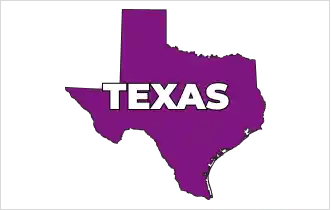Find The Best Daycare Jobs and Talents Near You
Search best of the childcare jobs online. Choose the best to associate with. Accelerate your Growth!

Register an account to
start
Explore over thousands of
resumes
Find the most suitable
candidate
Popular Job Categories
Recent Jobs
Location-based Job Search
Our location-based search feature simplifies the process by finding the best part-time & full-time jobs in your area with just a few clicks.
Application Tracking
Enabling job seekers to track their applications and receive status notifications quickly.
Search Unlimited Jobs
Offering a vast array of job openings in the childcare industry, allowing job seekers to easily find and apply for roles that match their skills and experience.
User-Friendly Interface
Developing a user-friendly platform that is easy to use and navigate, helping job seekers quickly and easily find job opportunities that meet their needs.
Your Trusted Partner
in the Childcare Industry
We understand the unique needs and challenges of the childcare industry and work tirelessly to match the right candidates with the right employers. Join us on our mission to shape the future of the childcare industry and start your journey to a fulfilling career today.-.
Network with the best talents in Childcare Industry.
With Circle Time Jobs, you can now connect with the best industry professionals that will broaden your network. Hire or get hired!
Why Choose Circle Time Jobs?
Welcome to Circle Time Jobs, the premier location-based job platform tailored exclusively for childcare professionals. We understand the unique needs of those dedicated to nurturing and educating the next generation. Here’s why you should choose us for all your childcare job needs:
At Circle Time Jobs, we are committed to elevating your career and making your job search an empowering journey. Choose us because you deserve a platform that recognizes your worth and helps you find fulfilling opportunities that align with your passion for childcare.
Join us today and take the next step towards a rewarding childcare career!
Our platform is built by childcare professionals, for childcare professionals. We know the industry inside-out and have designed every aspect to cater to your specific requirements. Whether you’re a nanny, tutor, daycare worker, or educator, you’ll find a community that understands your passion and values.
Finding the perfect childcare job is all about location. Our platform focuses on connecting you with opportunities in your area. Say goodbye to long commutes and hello to a better work-life balance. We ensure that the jobs you see are convenient and accessible, so you can focus on what truly matters – making a positive impact on young lives.
No two childcare professionals are the same, and neither are the families and institutions seeking your expertise. Our advanced matching algorithm takes into account your skills, experience, and preferences to suggest jobs that align with your strengths. This means more meaningful connections and fulfilling job experiences.
Your trust and safety are paramount to us. That’s why we meticulously verify all the employers on our platform. You can rest assured that the families and organizations you interact with are reputable and committed to providing a supportive and respectful work environment.
We believe in your continuous growth. Our platform goes beyond job listings by offering resources, articles, and forums that help you enhance your skills and stay up-to-date with the latest trends in childcare. Additionally, our support team is always ready to assist you with any questions or concerns you might have.
We’ve designed our platform to be user-friendly and intuitive. From creating your profile to applying for jobs and managing your schedule, everything is streamlined for your convenience. Spend less time navigating and more time doing what you love – enriching young minds.
Join a vibrant community of childcare professionals who share your enthusiasm and dedication. Participate in discussions, share your insights, and learn from others’ experiences. This sense of belonging can be invaluable as you navigate your career in the childcare industry.
Childcare hiring reimagined Find top talent with ease
Find top childcare talent with ease! Our platform matches you with experienced and qualified candidates. Streamline the hiring process and save time and money. Join us today and experience the future of childcare hiring!
















